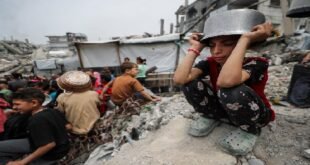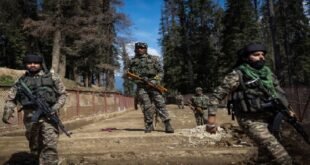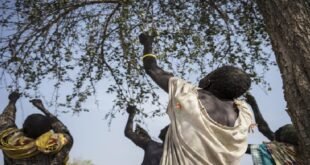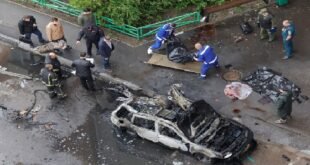By Syed Jaffer Abbas Jafri (By SJA Jafri)
19-05-2021
On 8th Shawwal in the year 1345 AH (April 21, 1925), mausoleums in Jannatul-ul-Baqi (holy city of Medina) were demolished by the then most controversial ruler of Kingdom of Saudi Arabia (KSA) known as “King Ibn-e-Saud”.
The Shia population of the entire Muslim world (almost 59 countries) is estimated to be as high as 300 million which is 20 percent of the total Shia global population.
Religious leaders in their speeches have strongly been condemning the demolition of the holy shrines adding that their protest would continue till the restoration of dignity of the holy shrines.
They say that reconstruction of ‘Jannat-ul-Baqi’ is the issue in faith, spiritual and human in nature. They have been calling, insisting and demanding upon the United Nations Organization (UNO) to get the dignity of Islamic symbols restored.
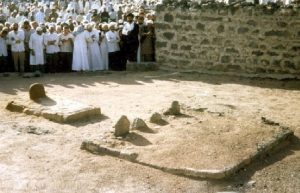 They have been lodging strong protest on the dilapidated condition of ‘Jannatul-ul-Baqi’ while they have also been presenting condolence (‘pursa’) to the holy Prophet (Peace Be Upon Him/ PBUH/ SAWW) on the destruction of holy shrines.
They have been lodging strong protest on the dilapidated condition of ‘Jannatul-ul-Baqi’ while they have also been presenting condolence (‘pursa’) to the holy Prophet (Peace Be Upon Him/ PBUH/ SAWW) on the destruction of holy shrines.
Protestors from across the world including India, Iran, Iraq, Kuwait, Lebanon, Syria, Yemen, Afghanistan, Bahrain, Bangladesh, United Arab Emirates (UAE), Pakistan and dozens of Asian, African, American and European countries even KSA (self) have been protesting with holding banners and play-cards inscribed with slogans in favor of their demands. sucide
Despite COVID-19 pandemic, lockdowns and other restrictions and beside severe threats of bombing, suicidal attacks, target killing, kidnapping, enforced missing, slaughtering, beheading etc from anti-Shia terrorist organizations like al-Qaeda, Taliban (both TTP & TTA), LeJ, JuA, SSP, Daesh, ISIS, ISIL, IS, JeI, JeM, Boko Haram and Takfiris as well Wahhabis, the millions of Shia Muslims have already been decided to hold peaceful rallies, sit-ins, protests and token strikes for three days globally (on Wednesday, Thursday and Friday, the 7th, 8th and 9th Shawal 1442 AH it means 19th 20th and 21st of May 2021) with considering and following strict SOPs second continuative year while the Majalis (religious gatherings) speeches and other programs would be held worldwide.
History of the Cemetery Of Jannat-ul-Baqi
Where Imam Hassan Ibn-e-Ali-AS (2nd Imam), Imam Ali Ibn-al-Hussain (4th Imam), Imam Muhammad Ibn-e-Ali (5th Imam), & Imam Jaffer Ibn-e-Muhammad (6th Imam), Peace Be Upon Them/ PBUT, are buried
On 8th Shawwal, Wednesday, in the year 1345 AH (April 21, 1925), mausoleums in Jannatul-ul-Baqi (Medina) were demolished by King Ibn-e-Saud.
In the same year (1925), he also demolished the tombs of holy personages at Jannat-ul-Mu’alla (Mecca) where the Holy Prophet (s)’s mother, wife, grandfather and other ancestors are buried.
Destruction of sacred sites in Hijaz by the Saudi Wahhabis continues even today. According to some scholars what is happening in Hijaz is actually a conspiracy plotted by the Jews against Islam, under the guise of Tawheed. The idea is to eradicate the Islamic legacy and heritage and to systematically remove all its vestiges so that in the days to come, Muslims will have no affiliation with their religious history.
Literally “Al-Baqi” means a tree garden. It is also known as “Jannat-ul-Baqi” due to its sanctity, since in it buried many of our Prophet’s relatives and companions.
The first companion buried in Al-Baqi was Uthman Ibn-e-Madhoon who died on the 3rd of Shaban in the 3rd year of Hijrah. The Prophet (s) ordered certain trees to be felled, and in its midst, he buried his dear companion, placing two stones over the grave.
On the following years, the Prophet’s son Ibrahim, who died in infancy and over whom the Prophet (s) wept bitterly, was also buried there. The people of Madina then began to use that site for the burial of their own dead, because the Prophet (s) used to greet those who were buried in Al-Baqi by saying, “Peace Be Upon You/ PBUY, O’ abode of the faithful! God willing, we should soon join you. O’ Allah, forgive the fellows of Al-Baqi”.
The site of the burial ground at al-Baqi was gradually extended. Nearly seven thousand companions of the Holy Prophet (s) were buried there, not to mention those of the Ahlul Bayt (AS). Imam Hasan Ibn Ali (a), Imam Ali Ibn Al-Husayn (AS), Imam Muhammad Al-Baqir (AS), and Imam Jaffer Al-Sadiq (AS) were all buried there.
Among other relatives of the Prophet (s) who were buried at al-Baqi are: his aunts Safiya and Aatika, and his aunt Fatima Bint Al-Asad, the mother of Imam Ali (AS). The third caliph Uthman was buried outside al-Baqi, but with later extensions, his grave was included in the area. In later years, great Muslim scholars like Malik Ibn Anas and many others, were buried there too. Thus, did al-Baqi become a well-known place of great historic significance to all Muslims.
Al-Baqi as viewed by historians
Umar Ibn Jubair describes Al-Baqi as he saw it during his travel to Madina, saying “Al-Baqi is situated to the east of Madina. You enter it through the gate known as the gate of al-Baqi. As you enter, the first grave you see on your left is that of Safiya, the Prophet’s aunt, and further still is the grave of Malik bin Anas, the Imam of Madina. On his grave is raised a small dome.
In front of it is the grave of Ibrahim son of our Prophet (s) with a white dome over it, and next to it on the right is the grave of Abdul-Rahman son of Umar bin Al-Khattab, popularly known as Abu Shahma, whose father had kept punishing him till death overtook him. Facing it are the graves of Aqeel bin Abi Talib and Abdullah bin Jaffer Al-Tayyar. There, facing those graves is a small shrine containing the graves of the Prophet’s wives, following by a shrine of Abbas bin Abdul Muttalib.
 The grave of Hassan bin-e-Ali (AS), situated near the gate to its right hand, has an elevated dome over it. His head lies at the feet of Abbas bin Abdul Muttalib, and both graves are raised high above the ground; their walls are paneled with yellow plates and studded with beautiful star-shaped nails. This is how the grave of Ibrahim, son of the Prophet (s) has also been adorned. Behind the shrine of Abbas there is the house attributed to Fatima, daughter of our Prophet (s), known as “Bayt Al-Ahzaan” (the house of grief) because it is the house she used to frequent in order to mourn the death of her father, the chosen one, peace be upon him. At the farthest end of al-Baqi is the grave of the caliph Uthman, with a small dome over it, and there, next to it, is the grave of Fatima bint-e-Asad, mother of Ali Ibn-e-Abi Talib (AS)”
The grave of Hassan bin-e-Ali (AS), situated near the gate to its right hand, has an elevated dome over it. His head lies at the feet of Abbas bin Abdul Muttalib, and both graves are raised high above the ground; their walls are paneled with yellow plates and studded with beautiful star-shaped nails. This is how the grave of Ibrahim, son of the Prophet (s) has also been adorned. Behind the shrine of Abbas there is the house attributed to Fatima, daughter of our Prophet (s), known as “Bayt Al-Ahzaan” (the house of grief) because it is the house she used to frequent in order to mourn the death of her father, the chosen one, peace be upon him. At the farthest end of al-Baqi is the grave of the caliph Uthman, with a small dome over it, and there, next to it, is the grave of Fatima bint-e-Asad, mother of Ali Ibn-e-Abi Talib (AS)”
After a century and a half, the famous traveller Ibn Batuta came to describe al-Baqi in a way which does not in any way differ from the description given by Ibn-e-Jubair. He adds saying, “At al-Baqi are the graves of numerous Muhajirin and Ansar and many companions of the Prophet (s), except that most of their names are unknown.”
Thus, over the centuries, al-Baqi remained a sacred site with renovations being carried out as and when needed till the Wahhabis rose to power in the early nineteenth century. The latter desecrated the tombs and demonstrated disrespect to the martyrs and the companions of the Prophet (s) buried there. Muslims who disagreed with them were branded as “infidels” and were subsequently killed.
The first destruction of Al-Baqi
The Wahhabis believed that visiting the graves and the shrines of the Prophets, the Imams, or the saints was a form of idolatry and totally un-Islamic. Those who did not conform to their belief were killed and their property was confiscated. Since their first invasion of Iraq, and till nowadays, in fact, the Wahhabis, as well as other rulers of the Gulf States, have been carrying out massacres from which no Muslim who disagreed with them was spared. Obviously, the rest of the Islamic World viewed those graves with deep reverence. Had it not been so, the two caliphs Abu Bakr and Umar would not have expressed their desire for burial near the grave of the Prophet (s).
From 1205 AH to 1217 AH, the Wahhabis made several attempts to gain a foothold in Hijaz but failed. Finally, in 1217 AH, they somehow emerged victorious in Taif where they spilled the innocent blood of Muslims. In 1218 AH, they entered Makkah and destroyed all sacred places and domes there, including the one which served as a canopy over the well of Zamzam.
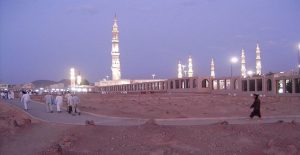 In 1221, the Wahhabis entered Madina to desecrate al-Baqi as well as every mosque they came across. An attempt was even made to demolish the Prophet’s tomb, but for one reason or another, the idea was abandoned. In subsequent years, Muslims from Iraq, Syria, and Egypt were refused entry into Makkah for Hajj. King Al-Saud set a precondition that those who wished to perform the pilgrimage would have to accept Wahhabism or else be branded as non-Muslims, becoming ineligible for entry into the Haram.
In 1221, the Wahhabis entered Madina to desecrate al-Baqi as well as every mosque they came across. An attempt was even made to demolish the Prophet’s tomb, but for one reason or another, the idea was abandoned. In subsequent years, Muslims from Iraq, Syria, and Egypt were refused entry into Makkah for Hajj. King Al-Saud set a precondition that those who wished to perform the pilgrimage would have to accept Wahhabism or else be branded as non-Muslims, becoming ineligible for entry into the Haram.
Al-Baqi was razed to the ground, with no sign of any grave or tomb whatsoever. But the Saudis were still not quite satisfied with doing all of that. Their king ordered three black attendants at the Prophet’s shrine to show him where the treasures of valuable gifts were stored. The Wahhabis plundered the treasure for their own use.
Thousands of Muslims fled Makkah and Madina in a bid to save their lives and escape from the mounting pressure and persecution at the hands of the Wahhabis. Muslims from all over the world denounced this Saudi savagery and exhorted the Caliphate of the Ottoman Empire to save the sacred shrines from total destruction.
Then, as it is known, Muhammad Ali Basha attacked Hijaz and, with the support of local tribes, managed to restore law and order in Madina and Makkah, dislodging the Al-Saud clansmen. The entire Muslim world celebrated this victory with great fanfare and rejoicing. In Cairo, the celebrations continued for five days. No doubt, the joy was due to the fact that pilgrims were once more allowed freely to go for Hajj, and the sacred shrines were once again restored.
In 1818 AD, the Ottaman Caliph Abdul Majid and his successors, Caliphs Abdul Hamid and Mohammed, carried out the reconstruction of all sacred places, restoring the Islamic heritage at all important sites. In 1848 and 1860 AD, further renovations were made at the expense of nearly seven hundred thousand pounds, most of which came from the donations collected at the Prophet’s tomb.
 The second plunder by the Wahhabis
The second plunder by the Wahhabis
The Ottoman Empire had added to the splendor of Medina and Mecca by building religious structures of great beauty and architectural value. Richard Burton, who visited the holy shrines in 1853 AD disguised as an Afghan Muslim and adopting the Muslim name Abdullah, speaks of Medina boasting 55 mosques and holy shrines. Another English adventurer who visited Medina in 1877-1878 AD describes it as a small beautiful city resembling Istanbul. He writes about its white walls, golden slender minarets and green fields.
1924 AD Wahhabis entered Hijaz for a second time and carried out another merciless plunder and massacre. People in streets were killed. Houses were razed to the ground. Women and children too were not spared.
Awn bin Hashim (Shairf of Mecca) writes: “Before me, a valley appeared to have been paved with corpses, dried blood staining everywhere all around. There was hardly a tree which didn’t have one or two dead bodies near its roots.”
1925 Medina surrendered to the Wahhabi onslaught. All Islamic heritages were destroyed. The only shrine that remained intact was that of the Holy Prophet (s).
Ibn-e-Jabhan says: “We know that the tomb standing on the Prophet’s grave is against our principles, and to have his grave in a mosque is an abominable sin.”
Tombs of Hamza and other martyrs were demolished at Uhud. The Prophet’s mosque was bombarded. On protest by Muslims, assurances were given by Ibn-e-Saud that it will be restored but the promise was never fulfilled. A promise was given that Hijaz will have an Islamic multinational government. This was also abandoned.
1925 AD Jannat Al-Mu’alla, the sacred cemetery at Mecca was destroyed along with the house where the Holy Prophet (s) was born. Since then, this day is a day of mourning for all Muslims.
Is it not strange that the Wahhabis find it offensive to have the tombs, shrines and other places of importance preserved, while the remains of their Saudi kings are being guarded at the expense of millions of dollars?
Protests from Muslims
1926, protest gatherings were held by shocked Muslims all over the world. Resolutions were passed and a statement outlining the crimes perpetrated by Wahhabis was issued and included the following;
- The destruction and desecration of the holy places i.e. the birth place of the Holy Prophet (s), the graves of Banu Hashim in Mecca and in Jannat-ul-Baqi (Medina), the refusal of the Wahhabis to allow Muslims to recite Ziyarah or Surah Al-Fatiha at those graves.
- The destruction of the places of worships i.e. Masjid Hamza, Masjid Abu Rasheed, in addition to the tombs of Imams and Sahaba (Prophet’s companions).
- Interference in the performance of Hajj rituals.
- Forcing the Muslims to follow the Wahhabis innovations and to abandon their own ways according to the guidance of the Imams they follow.
- The massacre of Sayyids in Taif, Medina, Ahsa, and Qatif.
- The demolition of the grave of the Imams at al-Baqi which deeply offended and grieved all Shias.
 Similar protests were lodged by Muslims in Iran, Iraq, Egypt, Indonesia, and Turkey. All of them condemn the Saudi Wahhabis for their barbaric acts. Some scholars wrote tracts and books to tell the world the fact that what was happening in Hijaz was actually a conspiracy plotted by the Jews against Islam, under the guise of Tawheed. The idea was to eradicate the Islamic legacy and heritage and to systematically remove all its vestiges so that in the days to come, Muslims will have no affiliation with their religious history.
Similar protests were lodged by Muslims in Iran, Iraq, Egypt, Indonesia, and Turkey. All of them condemn the Saudi Wahhabis for their barbaric acts. Some scholars wrote tracts and books to tell the world the fact that what was happening in Hijaz was actually a conspiracy plotted by the Jews against Islam, under the guise of Tawheed. The idea was to eradicate the Islamic legacy and heritage and to systematically remove all its vestiges so that in the days to come, Muslims will have no affiliation with their religious history.
A partial list of the demolished graves and shrines
- Al-Mualla graveyard in Makkah which includes the grave of Sayyida Khadija bint Khuwailid (a), wife of the Prophet (s), the grave of Amina bint Wahab, mother of the Prophet (s), the grave of Abu Talib, father of Imam Ali (a), and the grave of Abdul Muttalib, grandfather of the Prophet (s)
- The grave of Hawa (Eve) in Jeddah
- The grave of the father of the Prophet (s) in Madina
- The house of sorrows (Bayt Al-Ahzan) of Sayyida Fatima (a) in Madina
- The Salman al-Farsi mosque in Madina
- The Raj’at ash-Shams mosque in Madina
- The house of the Prophet (s) in Madina, where he lived after migrating from Makkah
- The house of Imam Ja’far Al-Sadiq (a) in Madina
- The complex (mahhalla) of Banu Hashim in Madina
- The house of Imam Ali (a) where Imam Hasan (a) and Imam Husayn (a) were born
- The house of Hamza and the graves of the martyrs of Uhud (a)
The Destruction of al-Baqi – A TIMELESS TRAGEDY
Every year, barely a week after the celebration of Eid, Shias all over the world gather together to remember the tragedy of The Demolition of al-Baqi, a destruction from which this blessed cemetery has never recovered.
On a dark Wednesday towards the end of April, 1925 (8th Shawwal, 1345 AH), Jannat Al-Baqi, a graveyard in Medina of great historical importance and filled with the graves of thousands of the companions of our Holy Prophet (s) as well as those of his Ahlul Bayt (AS) was demolished on the order of King Ibn-e-Saud.
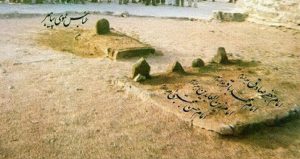 Al-Baqi was established by the Prophet (s) when he ordered certain trees to be felled from the garden to bury his companion, Uthman ibn-e-Madh’un. In the following years, the Prophet (s) also buried his infant son Ibrahim there. The area became popular for burial, because the Prophet (s) used to greet those who were buried there by saying, “PBUY, O’ abode of the faithful! God willing, we should soon join you. O’ Allah, forgive the fellows of al-Baqi”.
Al-Baqi was established by the Prophet (s) when he ordered certain trees to be felled from the garden to bury his companion, Uthman ibn-e-Madh’un. In the following years, the Prophet (s) also buried his infant son Ibrahim there. The area became popular for burial, because the Prophet (s) used to greet those who were buried there by saying, “PBUY, O’ abode of the faithful! God willing, we should soon join you. O’ Allah, forgive the fellows of al-Baqi”.
Eventually, his beloved daughter Fatimah al-Zahra (a) was buried there too along with Imam Hasan Ibn Ali (a), Imam Ali Ibn al-Husayn (a), Imam Muhammad al-Baqir (a), and Imam Ja’far al-Sadiq (a).
Over the years, al-Baqi was maintained with splendour and respect, until the first attack on it occurred in 1806, under the rule of Saud bin Abdulaziz. However, the Ottomans gained control over the region a few years later and rebuilt the graveyard in 1818.
Sadly, just over a century later, in 1924, Wahhabis entered Hijaz for a second time and carried out another merciless plunder and massacre. Houses were razed, people were killed in the streets, women and children too were not spared, with eyewitnesses speaking of infants being beheaded while still clinging to the necks of their mothers. Awn bin Hashim (Sharif of Mecca) writes: “Before me, the valley appeared to have been paved with corpses, dried blood staining everywhere all around. There was hardly a tree which didn’t have one or two dead bodies near its roots.”
In 1925, Ibn-e-Saud attacked and destroyed Jannat al-Mu’alla in Mecca along with other holy shrines and then moved on to demolish Jannat-ul-Baqi and level it to the ground.
Despite worldwide protests held the following year and every year since by Muslims to denounce this massacre and destruction, there has been neither apology nor an offer of reconstruction by the powers in place.
This year, as we at The World Federation join the world in mourning the desecration of the holy graves of our Imams (as) and remember the innocent lives lost simply for nurturing the love of the Ahlul Bayt (AS), we cannot help but look around us and see history repeating itself not only in Madina, but in Iraq, Syria, Pakistan and all the other areas in which Muslims – and Shias in particular – are being targeted and brutally slaughtered.
Standing up in protest of what happened so many decades ago is a way of reminding ourselves that someone still needs to speak up for the oppressed and the innocent, for if we don’t support our own brothers and sisters, then who will?
 Pressmediaofindia
Pressmediaofindia

